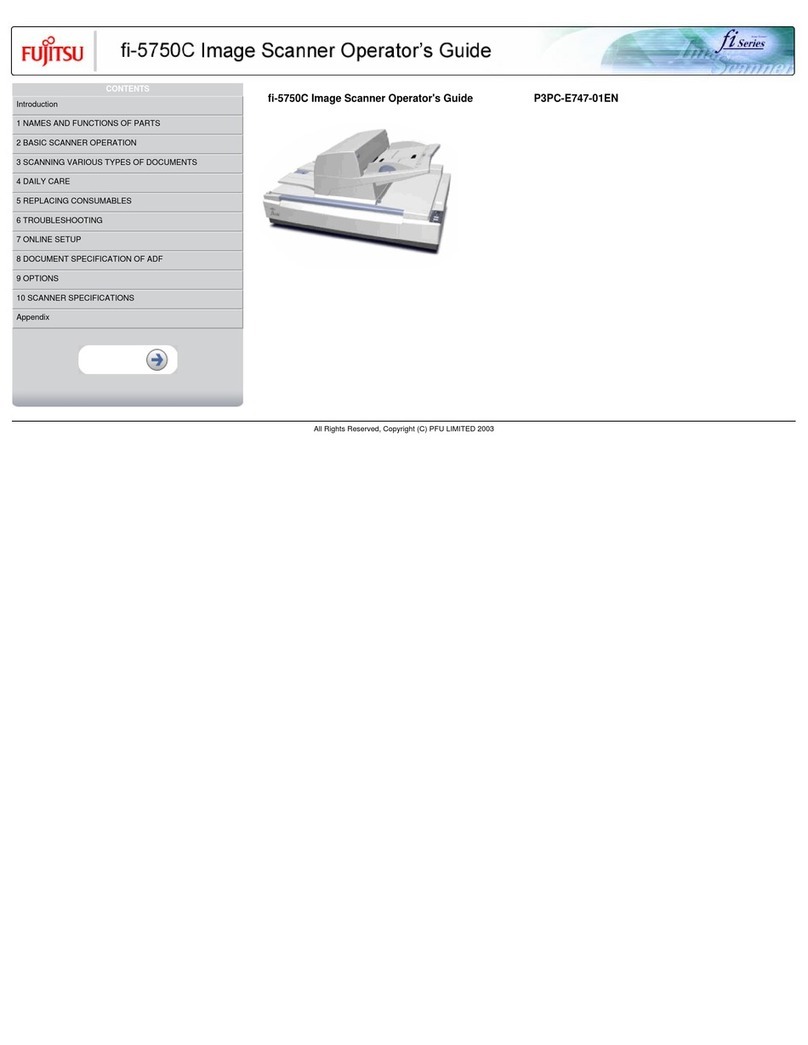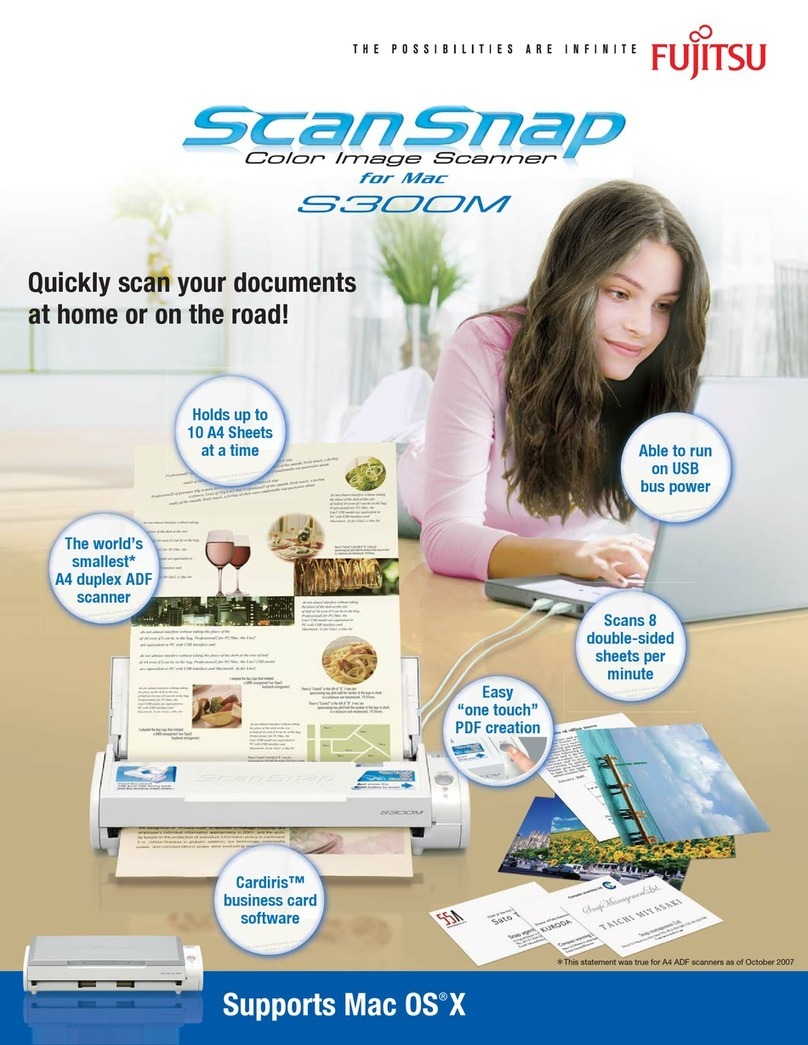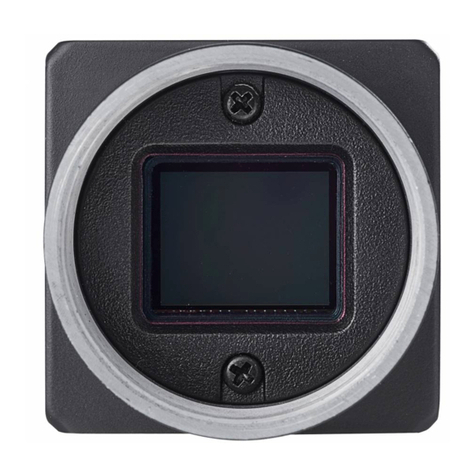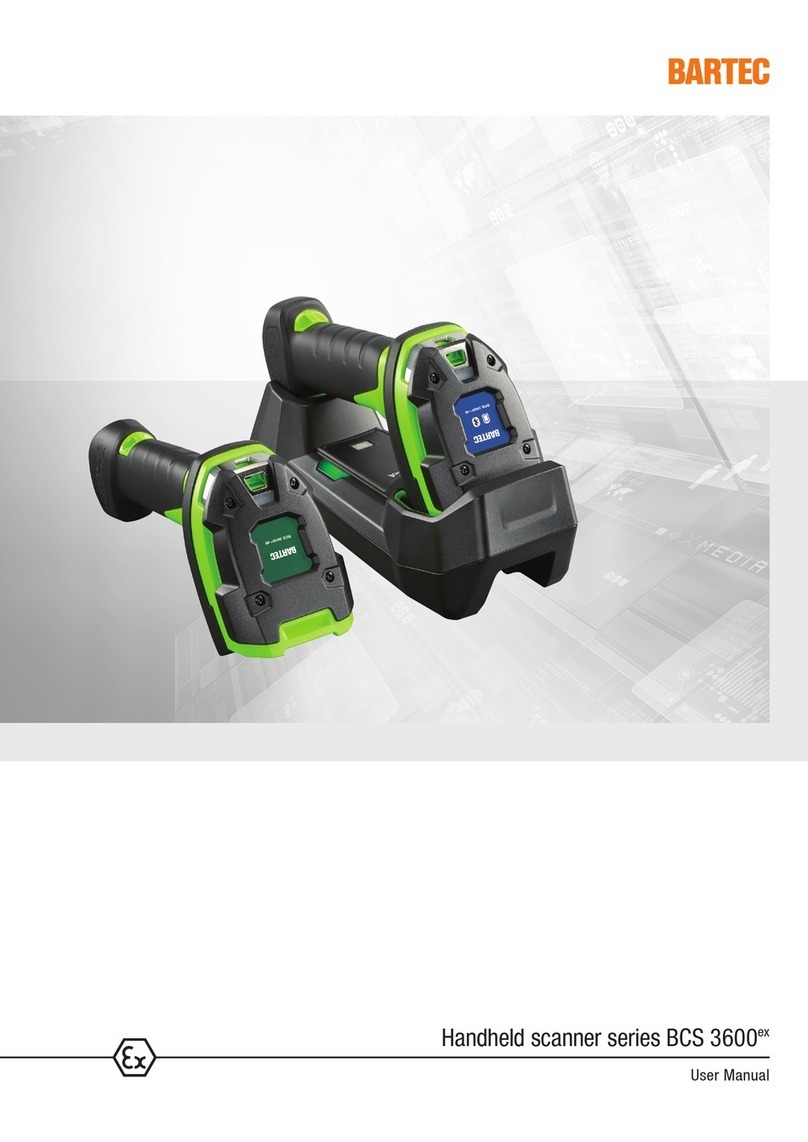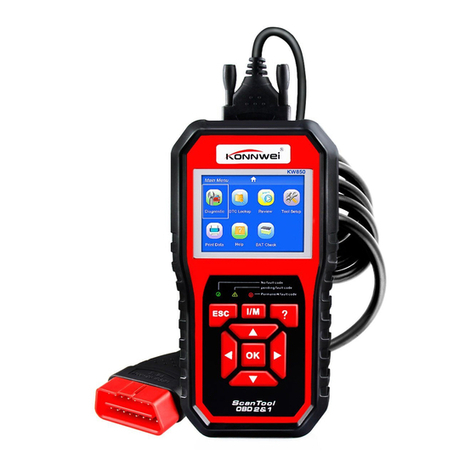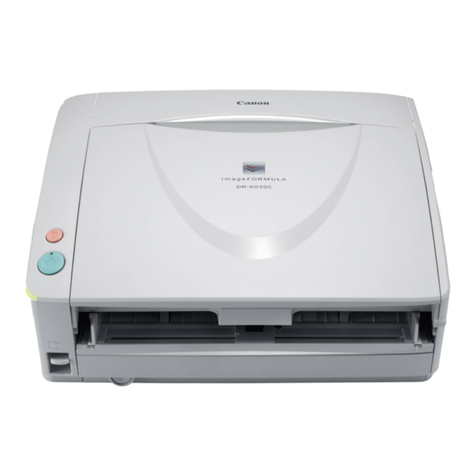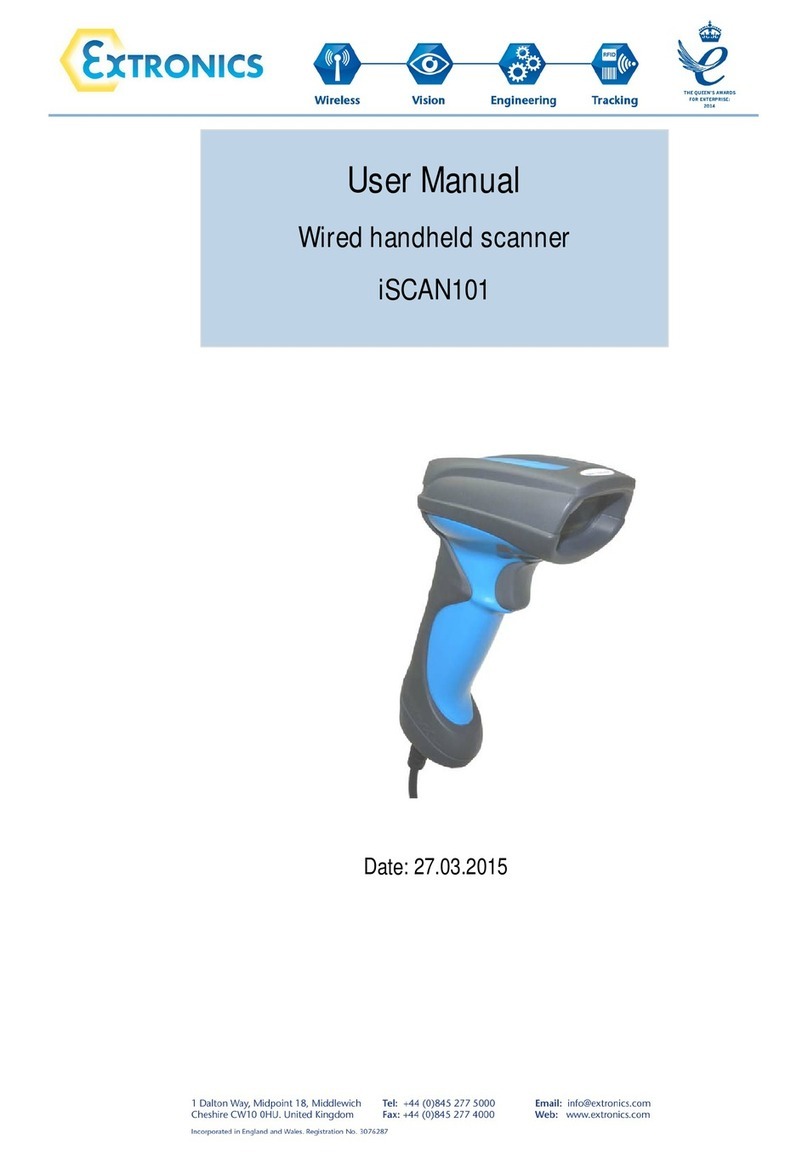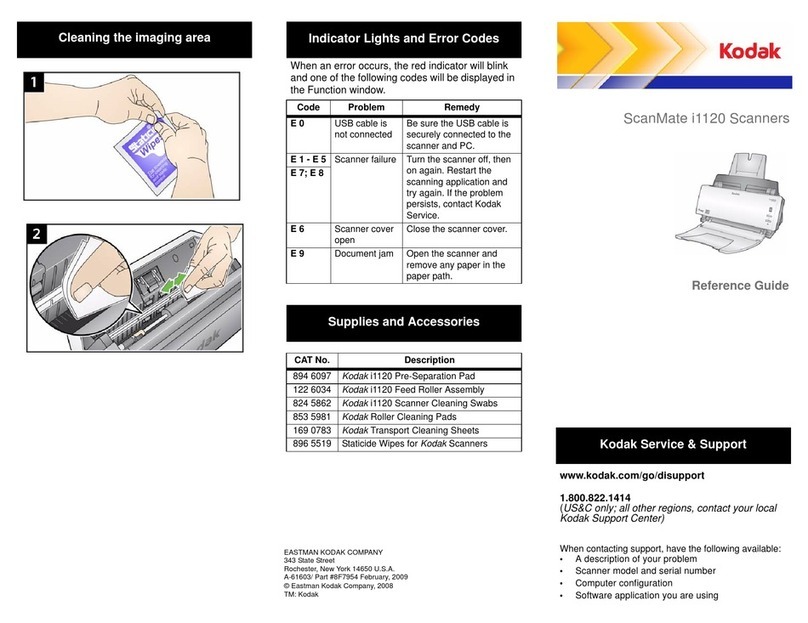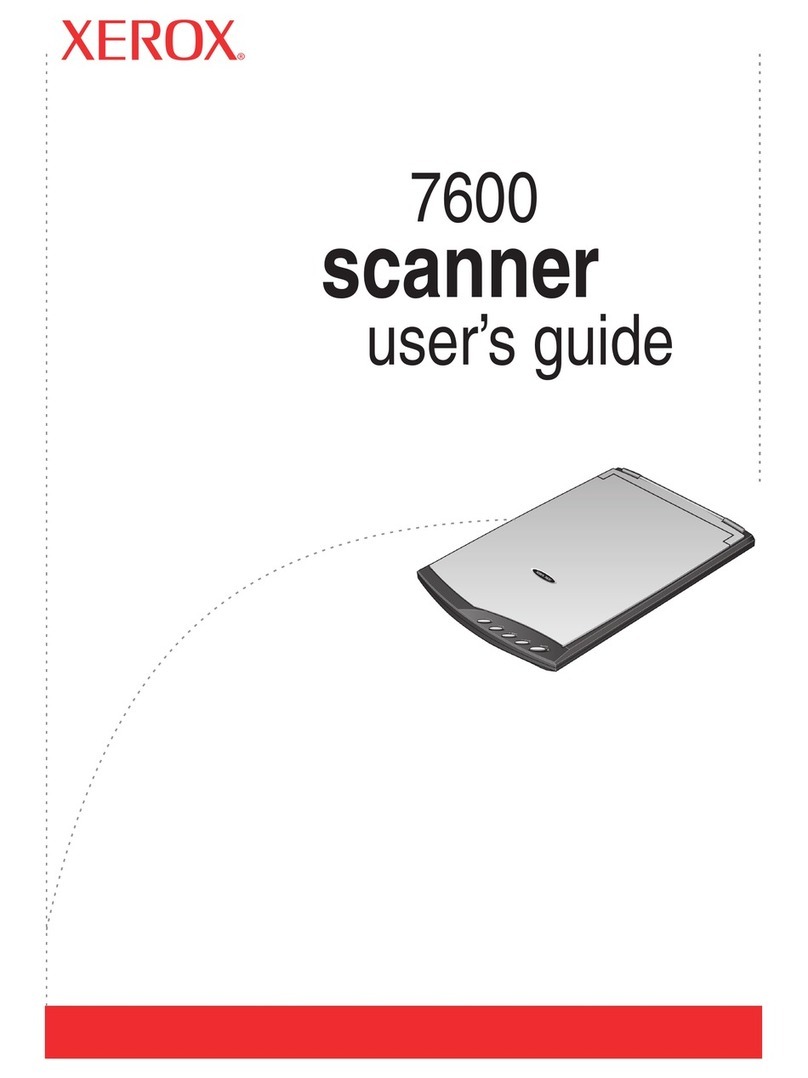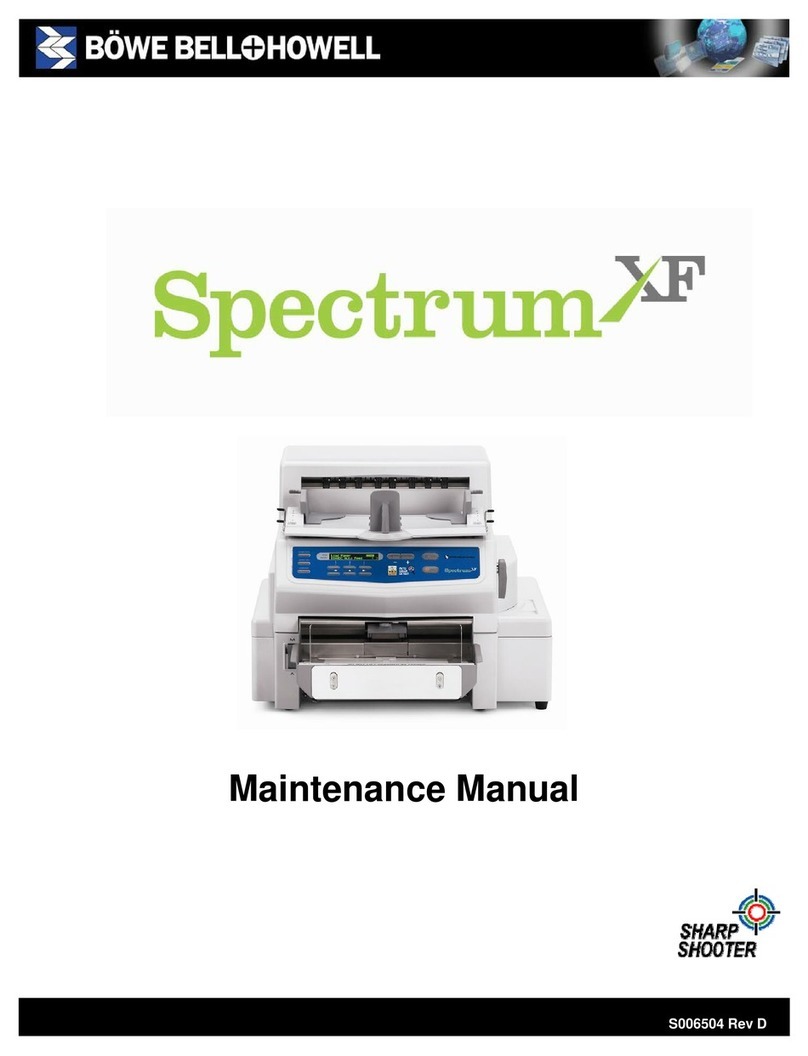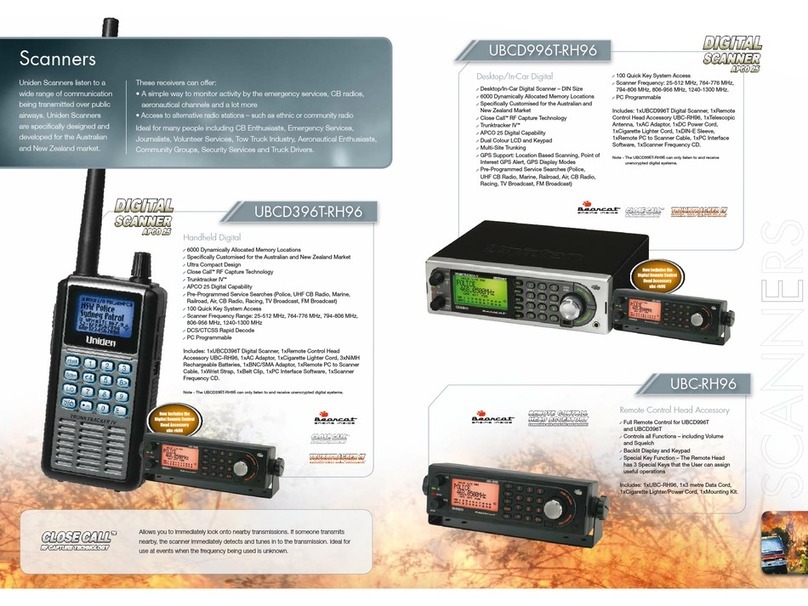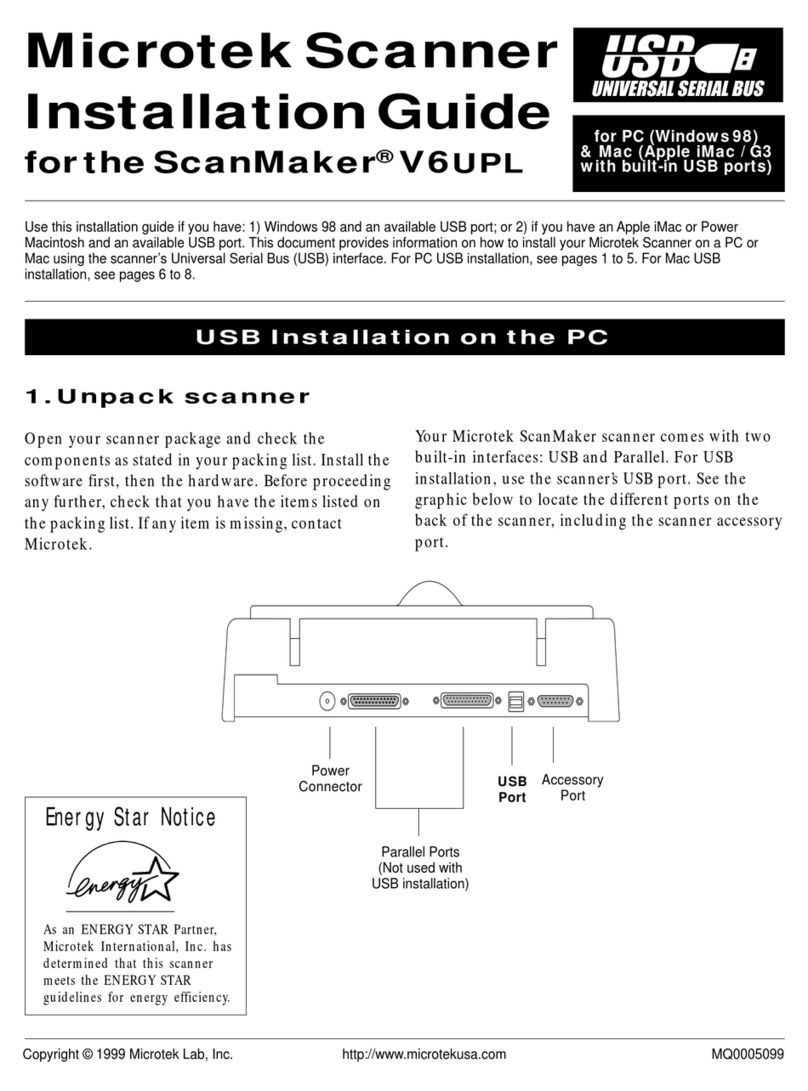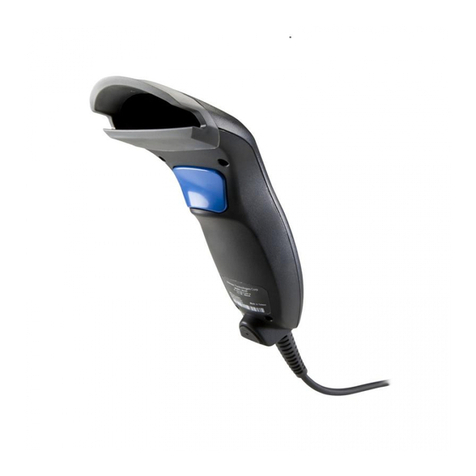Simply OBD001 User manual

®
PLEASE NOTE: you will only be able to turn
an engine warning light off when the problem
causing the warning light has been resolved.
OBD001

...............................................................1
2.1 On-Board Diagnostics (OBD) II........................................................................1
2.2 Diagnostic Trouble Codes (DTCs)...................................................................2
2.3 Location of the Data Link Connector (DLC)............................................2
2.4 OBD II Readiness Monitors.................................................................................3
2.5 OBD II Monitor Readiness Status...................................................................3
2.6 OBD II Terminology..................................................................................................4
3.1 Tool Description..........................................................................................................5
3.2 ProductSpecications..........................................................................................6
3.3 Product Features.......................................................................................................6
3.4 Vehicle Coverage.......................................................................................................6
4.1 Reading Codes............................................................................................................7
4.2 Erasing Codes..............................................................................................................9
4.3 Retrieving I/M Readiness Status...................................................................10
4.4 Viewing VIN Number.............................................................................................11
4.5 Rescanning Data.......................................................................................................11
......................................12

1
To prevent personal injury or damage to vehicles and/or the scan tool, please read
thismanualrstandfollowthefollowingsafetyinstructionswheneverworkingon
a vehicle:
•
Always perform automotive testing in a safe environment.
•
Wear safety eye protection that meets ANSI standards.
•
Keep clothing, hair, hands, tools, test equipment, etc, away from all moving or
hot engine parts.
•
Operate the vehicle in a well-ventilated work area; Exhaust gases are poisonous.
•
Put blocks on drive wheels and never leave vehicle unattended while running
tests.
•
Use extreme caution when working around the ignition coil, distributor cap,
ignition wires and spark plugs. These components create hazardous voltages
when the engine is running.
•
Put transmission in PARK (for automatic transmission) or NEUTRAL (for manual
transmission) and make sure the parking brake is engaged.
•
Keepareextinguishersuitableforgasoline/chemical/electricalresnearby.
•
Don’t connect or disconnect any test equipment with ignition on or engine
running.
•
Keep the scan tool dry, clean and free from oil, water and grease. Use a mild
detergent on a clean cloth to clean the outside of the Scan Tool, when necessary.
TherstgenerationofOn-BoardDiagnostic(calledOBDI),wasdevelopedbythe
California Air Resources Board (ARB) and implemented in 1988 to monitor some
of the emission control components on vehicles. As technology evolved and
the desire to improve the OBD I system increased, a new generation of On-
Board Diagnostics system was developed. This second generation of On-Board
Diagnostic regulations is called “OBD II”.
The OBD II system is designed to monitor emission control systems and key
enginecomponentsbyperformingeithercontinuousorperiodictestsofspecic
components and vehicle conditions. When a problem is detected, the OBD II
system turns on a warning lamp (MIL) on the vehicle instrument panel to alert
the driver typically by the phrase of “Check Engine” or “Service Engine Soon”. The
system will also store important information about the detected malfunction so
thatatechniciancanaccuratelyndandxtheproblem.Herebelowfollowthree
pieces of such valuable information:
•
Whether the Malfunction Indicator Light (MIL) is commanded ‘on’ or ‘off’;
•
Which, if any, Diagnostic Trouble Codes (DTCs) are stored;
•
Readiness Monitor Status.

2
OBD II Diagnostic Trouble Codes are codes that are stored by the on-board
computer diagnostic system in response to a problem found in the vehicle. These
codes identify a particular problem area and are intended to provide you with a
guide as to where a fault might be occurring within a vehicle. OBD II Diagnostic
TroubleCodesconsistofave-digitalphanumericcode.Therstcharacter,a
letter,identiesthecontrolsystemwhichsetsthecode.Theotherfourcharacters,
all numbers, provide additional information on where the DTC originated and the
operatingconditionsthatcausedittoset.Herebelowisanexampletoillustrate
the structure of the digits:
The DLC (Data Link Connector or Diagnostic Link Connector) is the standardized
16-cavity connector where diagnostic scan tools interface with the vehicle’s
on-board computer. The DLC is usually located 12 inches from the centre of the
instrument panel (dashboard), under or around the driver’s side for most vehicles.
For some Asian and European vehicles, the DLC is located behind the ashtray
and the ashtray must be removed to access the connector. Refer to the vehicle’s
service manual for the location if the DLC cannot be found.
P0202
DTC Example
B=Body
C=Chassis
P=Powertrain
U=Network
0=Generic
1=Manufacturer
Specic
1=Fuel and Air metering
2= Fuel and Air metering
3= Ignition System or Engine
Misre
4=Auxiliary Emission Controls
5= Vehicle Speed Control and
Idle Controls
6=Computer Output Circuits
7=Transmission Controls
8=Transmission Controls
Identifying
Specic
Malfunctioning
Section of the
Systems

3
An important part of a vehicle’s OBDII system is the Readiness monitors, which are
indicatorsusedtondoutifalloftheemissionscomponentshavebeenevaluated
bytheOBDIIsystem.Theyarerunningperiodictestsonspecicsystemsand
components to ensure that they are performing within allowable limits.
Currently,thereareelevenOBDIIReadinessMonitors(orI/MMonitors)denedby
the U.S. Environmental Protection Agency (EPA). Not all monitors are supported
by all vehicles and the exact number of monitors in any vehicle depends on the
motor vehicle manufacturer’s emissions control strategy.
-- Some of the vehicle components or systems are
continuously tested by the vehicle’s OBDII system, while others are tested
onlyunderspecicvehicleoperatingconditions.Thecontinuouslymonitored
components listed below are always ready:
Once the vehicle is running, the OBDII system is continuously checking the above
components,monitoringkeyenginesensors,watchingforenginemisre,and
monitoring fuel demands.
– unlike the continuous monitors, many emissions
andenginesystemcomponentsrequirethevehicletobeoperatedunderspecic
conditions before the monitor is ready. These monitors are termed non-continuous
monitors and are listed below:
OBDII systems must indicate whether or not the vehicle’s PCM’s monitor system
has completed testing on each component. Components that have been tested
will be reported as “Ready”, or “Complete”, meaning they have been tested by the
OBDII system. The purpose of recording readiness status is to allow inspectors
to determine if the vehicle’s OBDII system has tested all the components and/or
systems.
The powertrain control module (PCM) sets a monitor to “Ready” or “Complete”

4
after an appropriate drive cycle has been performed. The drive cycle that enables
a monitor and sets readiness codes to “ready” varies for each individual monitor.
Once a monitor is set as “Ready” or “Complete”, it will remain in this state. A
number of factors, including erasing of diagnostic trouble codes (DTCs) with a
scan tool or a disconnected battery, can result in Readiness Monitors being set to
“not ready”. Since the three continuous monitors are constantly evaluating, they
will be reported as “Ready” all of the time. If testing of a particular supported non-
continuous monitor has not been completed, the monitor status will be reported
as “Not Complete” or “Not Ready.”
In order for the OBD monitor system to become ready, the vehicle should be
driven under a variety of normal operating conditions. These operating conditions
may include a mix of highway driving and stop and go, city type driving, and at
leastoneovernight-offperiod.Forspecicinformationongettingyourvehicle’s
OBD monitor system ready, please consult your vehicle owner’s manual.
– OBDII terminology for the on-board
computer that controls engine and drive train.
– Malfunction Indicator Light (Service Engine
Soon, Check Engine) is a term used for the light on the instrument panel. It is to
alert the driver and/or the repair technician that there is a problem with one or
more of vehicle’s systems and may cause emissions to exceed federal standards.
If the MIL illuminates with a steady light, it indicates that a problem has been
detected and the vehicle should be serviced as soon as possible.
Undercertainconditions,thedashboardlightwillblinkorash.Thisindicates
asevereproblemandashingisintendedtodiscouragevehicleoperation.The
vehicle onboard diagnostic system cannot turn the MIL off until the necessary
repairs are completed or the condition no longer exists.
–DiagnosticTroubleCodes(DTC)thatidentieswhichsectionofthe
emission control system has malfunctioned.
– Also termed Enabling Conditions. They are the vehicle-
speciceventsorconditionsthatmustoccurwithintheenginebeforethevarious
monitors will set, or run. Some monitors require the vehicle to follow a prescribed
“drive cycle” routine as part of the enabling criteria. Drive cycles vary among
vehicles and for each monitor in any particular vehicle.
–Aspecicmodeofvehicleoperationthatprovidesconditions
required to set all the readiness monitors applicable to the vehicle to the “Ready”
condition. The purpose of completing an OBD II drive cycle is to force the vehicle
to run its onboard diagnostics. Some form of a drive cycle needs to be performed
after DTCs have been erased from the PCM’s memory or after the battery has

5
been disconnected. Running through a vehicle’s complete drive cycle will “set”
the readiness monitors so that future faults can be detected. Drive cycles vary
depending on the vehicle and the monitor that needs to be reset. For vehicle
specicdrivecycle,consultthevehicle’sOwner’sManual.
1. – Indicates test results. It is a backlit 2-line display with 8
characters on each line.
2. –Conrmsaselection(oraction)fromamenulist,orreturns
to the main menu.
3. – Scrolls through menu items or cancel an operation.
4. – Connects the scan tool to the vehicle’s Data Link
Connector (DLC).
2
1
3 4

•
Display: Backlit LCD, 2 lines, 8 characters each
•
Operating Temperature: 0 to 50°C (32 to 122°F)
•
Storage Temperature: -20 to 70°C (-4 to 158°F)
•
Power: DC12V provided via the vehicle’s battery
•
Dimensions:L:120mm(4.7”),W:65mm(2.6”),H:21mm(0.83”)
•
Weight: 225g (7.9oz).
•
Works with cars & light trucks that are OBD II/EOBD compliant (including CAN,
VPW, PWM, ISO and KWP 2000 protocols)
•
ReadsandclearsgenericandmanufacturerspecicDiagnosticTroubleCodes
(DTCs) and turns off check engine light
•
Supports multiple trouble code requests: generic codes, pending codes and
manufacturer’sspeciccodes
•
Reviews the emission readiness status of OBD monitors
•
RetrievesVIN(VehicleIdenticationNo.)on2002andnewervehiclesthat
support Mode 9
•
Determines the malfunction indicator lamp (MIL) status
•
Highlyreliableandaccurate
•
Easy-to-read crystal-clear backlit 2-line LCD display
•
Stand-alone unit with no need for an additional laptop or cellphone to operate
•
Smallinsize,easilytsinyourpalmandeasytouse
•
Safely communicates with the vehicle on-board computer
•
No batteries needed – powered via attached OBD II cable.
The OBD001 OBD II Scan Tool is specially designed to work with all OBD II
compliant vehicles, including those equipped with the next-generation protocol-
Control Area Network (CAN). It is required by EPA that All 1996 and newer vehicles
(cars and light trucks) sold in the United States must be OBD II compliant and this
includes all Domestic, Asian and European vehicles.
A small number of 1994 and 1995 model year gasoline vehicles are OBD II compliant.
To verify if a 1994 or 1995 vehicle is OBD II compliant, check the Vehicle Emissions
Control Information (VECI) Label which is located under the hood or by the
radiator of most vehicles. If the vehicle is OBD II compliant, the label will designate
“OBDIICertied”.Additionally,governmentregulationsmandatethatallOBDII
compliant vehicles must have a “common” sixteen-pin Data Link Connector (DLC).
For your vehicle to be OBD II compliant it must have a 16-pin DLC (Data Link
Connector) under the dashboard and the Vehicle Emission Control Information
Label must state that the vehicle is OBD II compliant.

7
1. Turn the ignition off.
2. Locate the 16-pin Data Link Connector (DLC) and plug into the Scan Tool cable
connector to the DLC.
3. Wait for the LCD display to read “”.
4. Turn the ignition on. But do not start the engine.
5. Press the button. A sequence of messages showing the OBD2 protocols
will be observed on the display until the vehicle protocol is detected.
C.A.N
OBD2
SCAN...
VPW
SCAN...
PWM
SCAN...
CAN
SCAN...
KWP 2000
ISO9141
PROTOCOL
6. Wait for the main menu to come up after a brief overview displaying the scanning
results with the total number of DTCs and the overall I/M Monitor Status.

8
DTC: 02
IM: YES
MENU:
1.DTC
7. Select “” from the main menu by pressing the button.
NO
CODES
•
If there are no Diagnostic Trouble Codes retrieved, the display will indicate
“”.
FAULT:02
PEND:02
•
If there are any Diagnostic Trouble Codes, then the total number of the Fault
Codes followed by that of the Pending Codes will be reported on the display.
8. Read the Diagnostic Trouble Codes by pressing the button.
•
TherstcodenumberwillappearontherstlineoftheLCDdisplay,the
numerical sequence of the code and the total number of the codes stored will
appear on the second line. To view additional codes, press the button to
scroll, as necessary, until all the codes have been shown up.
P0101
01/04
•
If the code retrieved is a pending code, a “PD” will show on the LCD display in
the end.
P0005 PD
01/05
•
To view previous codes, press the button to scroll through to the end,
andthenstartfromtherstofthelist.
9.Lookuppart5forDiagnosticTroubleCodeDenitions.Matchtheretrieved
DTC(S)withthoselistedandreadthedenitions.

1. If you decide to erase the DTCs, Select “” from the main menu by
pressing the button.
MENU:
2.ERASE
•
If the Scan Tool is not connected or no communication is established with the
vehicle yet, then refer to “” from 1 to 6 at Paragraph 4.1.
2. A message of “”comesupaskingforyourconrmation.
ERASE?
YES NO
3. If you do not want to proceed with erasing the codes, press the button to
exit.
4. If you do wish to proceed to erase the codes, then press the button.
5. If the codes are cleared successfully, an “” message will show on the
display. Press the button to Return to the main Menu list.
ERASE
DONE!
6. If the codes are not cleared, then an “” message will appear. Press the
button to Return to the main Menu list.
ERASE
FAIL!

10
•
“”: All monitors supported on the vehicle have completed their diagnostic
testing and the MIL light is not on
•
“”: At least one monitor supported on the vehicle has not completed its
diagnostic testing, and (or) the “Check Engine”( MIL) light is on
•
“”: Indicates that a particular monitor being checked has completed its
diagnostic testing
•
“”: Indicates that a particular monitor being checked has
not completed its diagnostic testing
•
“”: The monitor is not supported on that vehicle
•
“
→
”:AashingRightArrowindicatesadditionalinformationisavailableonthe
next screen
•
“
←
”:AashingLeftArrowindicatesadditionalinformationisavailableonthe
previous screen.
1. Select “” from the main menu by pressing the button.
MENU:
3.1/M
•If the Scan Tool is not connected yet, then refer to “”
from 1 to 6 at Paragraph 4.1.
2. Use the button to view the status of the light (“” or
“”) and the following monitors:
•“”:Misremonitor
•“”: Fuel System Monitor
•“”: Comprehensive Components Monitor
•“”: Catalyst Monitor
•“”:HeatedCatalystMonitor
•“”: Evaporative System Monitor
•“”: Secondary Air Monitor
•“”: A/C system Monitor

11
•“”: O2 Sensors Monitor
•“”:O2SensorHeaterMonitor
•“”: EGR System Monitor
3. Press the button to return to the main Menu.
TheViewVINfunctionallowsyoutoretrievetheVehicleIdenticationNo.
on 2002 and newer vehicles that support Mode 9.
1. Select “” from the main menu by pressing the button.
MENU:
4.VIN
•If the Scan Tool is not connected yet, then refer to “”
from step 1 to 6 at Paragraph 4.1.
2. Use the button to view additional digits of the 17-digit string.
•“
→
”:AashingRightArrowindicatesadditionaldigitsofVINstringare
available on the next screen.
•“
←
”:AashingLeftArrowindicatesadditionaldigitsofVINstringare
available on the previous screen
3. Press the button to return to the main Menu.
The function allows you to retrieve the most current data stored
in the ECM or to re-link to the vehicle if communication is disconnected.
1. Select “” from the main menu by pressing the button.
MENU:
5.RESCAN
•If the Scan Tool is not connected yet, then refer to “”
from 1 to 6 at Paragraph 4.1.
2. Use either the or button to return to the main menu.

12
ThefollowingDiagnosticTroubleCodeDenitionslistsprovideonlyGeneric
DiagnosticTroubleCodes.ForManufacturerSpecicDiagnosticTroubleCode
Denitions,consultthevehicle’sservicemanual.
P0001 Fuel Volume Regulator Control Circuit Open
Fuel Volume Regulator Control Circuit Range/Performance
P0003 Fuel Volume Regulator Control Circuit Low
P0004 FuelVolumeRegulatorControlCircuitHigh
Fuel Shutoff Valve. A Control Circuit Open
Fuel Shutoff Valve. A Control Circuit Low
FuelShutoffValve.AControlCircuitHigh
Engine Position System Performance (Bank 1)
Engine Position System Performance (Bank 2)
Camshaft Position Actuator A - Bank 1 Circuit Malfunction
Camshaft Position Actuator A - Bank 1 Timing Over-Advanced
Camshaft Position Actuator A - Bank 1 Timing Over-Retarded
Camshaft Position Actuator B - Bank 1 Circuit Malfunction
Camshaft Position Actuator B - Bank 1 Timing Over-Advanced
Camshaft Position Actuator B - Bank 1 Timing Over-Retarded
Cam/Crankshaft Pos. Correlation Sensor A - Bank 1
Cam/Crankshaft Pos. Correlation Sensor B - Bank 1
Cam/Crankshaft Pos. Correlation Sensor A - Bank 2
Cam/Crankshaft Pos. Correlation Sensor B - Bank 2
Camshaft Position Actuator A - Bank 2 Circuit Malfunction
Camshaft Position Actuator A - Bank 2 Timing Over-Advanced
Camshaft Position Actuator A - Bank 2 Timing Over-Retarded
Camshaft Position Actuator B - Bank 2 Circuit Malfunction
Camshaft Position Actuator B - Bank 2 Timing Over-Advanced
Camshaft Position Actuator B - Bank 2 Timing Over-Retarded

13
Intake Valve-Bank 1 Control Solenoid CKT Range/Performance
Exhaust Valve-Bank 1 Control Solenoid CKT Range/Performance
Intake Valve-Bank 2 Control Solenoid CKT Range/Performance
Exhaust Valve-Bank 2 Control Solenoid CKT Range/Performance
HO2SBank1Sensor1HeaterCircuit
HO2SBank1Sensor1HeaterCircuitLow
HO2SBank1Sensor1HeaterCircuitHigh
Turbo/Sup Wastegate Control Circuit
Turbo/Sup Wastegate Control Circuit Low
Turbo/SupWastegateControlCircuitHigh
HO2SBank1Sensor2HeaterCircuit
HO2SBank1Sensor2HeaterCircuitLow
HO2SBank1Sensor2HeaterCircuitHigh
Turbo/Super Charger Bypass Control CKT Performance
O2 Bank 1 Sensor 1 Signals Swapped w/ O2 Bank 2 Sensor 1
O2 Bank 1 Sensor 2 Signals Swapped w/ O2 Bank 2 Sensor 2
HO2SBank1Sensor3HeaterCircuit
HO2SBank1Sensor3HeaterCircuitLow
HO2SBank1Sensor3HeaterCircuitHigh
Turbo/Super Charger Boost Control Solenoid A Circuit Open
Turbo/Super Charger Boost Control Solenoid A Circuit Range/ Perform
Turbo/Super Charger Boost Control Solenoid A Circuit Low
Turbo/SuperChargerBoostControlSolenoidACircuitHigh
Turbo/Super Charger Boost Input/Turbine Speed Overspeed
HO2SBank2Sensor1HeaterCircuit
HO2SBank2Sensor1HeaterCircuitLow
HO2SBank2Sensor1HeaterCircuitHigh
HO2SBank1Sensor1HeaterResistance
HO2SBank1Sensor2HeaterResistance
HO2SBank1Sensor3HeaterResistance
HO2SBank2Sensor2HeaterCircuit
HO2SBank2Sensor2HeaterCircuitLow
HO2SBank2Sensor2HeaterCircuitHigh
HO2SBank2Sensor1HeaterResistance

14
HO2SBank2Sensor2HeaterResistance
HO2SBank2Sensor3HeaterResistance
HO2SBank2Sensor3HeaterCircuit
HO2SBank2Sensor3HeaterCircuitLow
HO2SBank2Sensor3HeaterCircuitHigh
Air Assisted Injector. Control Range/Performance
Air Assisted Injector. Control Circuit Low
AirAssistedInjector.ControlCircuitHigh
MAF/MAP Sensor Throttle Position Correlation
MAP/BARO Correlation
Ambient Air Temp. Sensor Circuit
Ambient Air Temp. Sensor Range/Performance
Ambient Air Temp. Sensor Circuit Low
AmbientAirTemp.SensorCircuitHigh
Ambient Air Temp. Sensor CKT Intermittent
Intake Valve-Bank 1 Control Circuit
Intake Valve-Bank 1 Control Circuit Low
IntakeValve-Bank1ControlCircuitHigh
Exhaust Valve-Bank 1 Control Circuit
Exhaust Valve-Bank 1 Control Circuit Low
ExhaustValve-Bank1ControlCircuitHigh
Intake Valve-Bank 2 Control Circuit
Intake Valve-Bank 2 Control Circuit Low
IntakeValve-Bank2ControlCircuitHigh
Exhaust Valve-Bank 2 Control Circuit
Exhaust Valve-Bank 2 Control Circuit Low
ExhaustValve-Bank2ControlCircuitHigh
Fuel Rail Pressure Too Low
FuelRailPressureTooHigh
Fuel Pressure Regulator 1 Performance
Fuel Pressure Regulator 1 Control Circuit
Fuel Pressure Regulator 1 Control Circuit Low
FuelPressureRegulator1ControlCircuitHigh
Fuel System Leak (Large)

15
Fuel System Leak (Small)
IAT Sensor 2 Circuit
IAT Sensor 2 CKT Range/Performance
IAT Sensor 2 Circuit Low
IATSensor2CircuitHigh
IAT Sensor 2 CKT Intermittent
MAF or VAF A Circuit Malfunction
MAF or VAF A Circuit Range/Performance
MAF or VAF A Circuit Low Input
MAForVAFACircuitHighInput
MAF or VAF A Circuit Intermittent
MAP/BARO Circuit Malfunction
MAP/BARO CKT Range/Performance
MAP/BARO Circuit Low Input
MAP/BAROCircuitHighInput
MAP/BARO CKT Intermittent
IAT Sensor Circuit Malfunction
IAT Sensor 1 CKT Range/Performance
IAT Sensor 1 Circuit Low Input
IATSensor1CircuitHighInput
IAT Sensor 1 CKT Intermittent
Engine Coolant Temp Circuit Malfunction
Engine Coolant Temp CKT Range/Performance
Engine Coolant Temp Circuit Low Input
EngineCoolantTempCircuitHighInput
Engine Coolant Temp CKT Intermittent
TPS/Pedal Position Sensor A Circuit Malfunction
TPS/Pedal Position Sensor A CKT Range/Performance
TPS/Pedal Position Sensor A Circuit Low Input
TPS/PedalPositionSensorACircuitHighInput
TPS/Pedal Position Sensor A CKT Intermittent
ClosedLoopFuelCtrlInsufcientCoolantTemp
CoolantTempInsufcientStableOperation
IATSensorTooHigh

Coolant Temp Below Thermostat Regulating Temp
Barometric Pressure Too Low
O2 Sensor Circuit Malfunction (Bank 1 Sensor 1)
O2 Sensor Circuit Low Volts (Bank 1 Sensor 1)
O2SensorCircuitHighVolts(Bank1Sensor1)
O2 Sensor CKT Slow Response (Bank 1 Sensor 1)
O2 Sensor CKT No Activity (Bank 1 Sensor 1)
O2SensorHeaterCircuitMalfunction(Bank1Sensor1)
O2 Sensor Circuit Malfunction (Bank 1 Sensor 2)
O2 Sensor Circuit Low Volts (Bank 1 Sensor 2)
O2SensorCircuitHighVolts(Bank1Sensor2)
O2 Sensor CKT Slow Response (Bank 1 Sensor 2)
O2 Sensor CKT No Activity (Bank 1 Sensor 2)
O2SensorHeaterCircuitMalfunction(Bank1Sensor2)
O2 Sensor Circuit Malfunction (Bank 1 Sensor 3)
O2 Sensor Circuit Low Volts (Bank 1 Sensor 3)
O2SensorCircuitHighVolts(Bank1Sensor3)
O2 Sensor CKT Slow Response (Bank 1 Sensor 3)
O2 Sensor CKT No Activity (Bank 1 Sensor 3)
O2SensorHeaterCircuitMalfunction(Bank1Sensor3)
Fuel Delivery Malfunction
Fuel Timing Malfunction
O2 Sensor Circuit Malfunction (Bank 2 Sensor 1)
O2 Sensor Circuit Low Volts (Bank 2 Sensor 1)
O2SensorCircuitHighVolts(Bank2Sensor1)
O2 Sensor CKT Slow Response (Bank 2 Sensor 1)
O2 Sensor CKT No Activity (Bank 2 Sensor 1)
O2SensorHeaterCircuitMalfunction(Bank2Sensor1)
O2 Sensor Circuit Malfunction (Bank 2 Sensor 2)
O2 Sensor Circuit Low Volts (Bank 2 Sensor 2)
O2SensorCircuitHighVolts(Bank2Sensor2)
O2 Sensor CKT Slow Response (Bank 2 Sensor 2)
O2 Sensor CKT No Activity (Bank 2 Sensor 2)
O2SensorHeaterCircuitMalfunction(Bank2Sensor2)

17
O2 Sensor Circuit Malfunction (Bank 2 Sensor 3)
O2 Sensor Circuit Low Volts (Bank 2 Sensor 3)
O2SensorCircuitHighVolts(Bank2Sensor3)
O2 Sensor CKT Slow Response (Bank 2 Sensor 3)
O2 Sensor CKT No Activity (Bank 2 Sensor 3)
O2SensorHeaterCircuitMalfunction(Bank2Sensor3)
EngineFuelTemperatureTooHigh
Fuel Composition Incorrect
Fuel Trim Malfunction (Bank 1)
System Too Lean (Bank 1)
System Too Rich (Bank 1)
Fuel Trim Malfunction (Bank 2)
System Too Lean (Bank 2)
System Too Rich (Bank 2)
Fuel Compensation Sensor Circuit Malfunction
Fuel Compensation Sensor CKT Range/Performance
Fuel Compensation Sensor Circuit Low Input
FuelCompensationSensorCircuitHighInput
Fuel Temperature Sensor A Circuit Malfunction
Fuel Temperature Sensor A CKT Range/Performance
Fuel Temperature Sensor A Circuit Low Input
FuelTemperatureSensorACircuitHighInput
Fuel Temperature Sensor A CKT Intermittent
Fuel Temperature Sensor B Circuit Malfunction
Fuel Temperature Sensor B CKT Range/Performance
Fuel Temperature Sensor B Circuit Low Input
FuelTemperatureSensorBCircuitHighInput
Fuel Temperature Sensor B CKT Intermittent
Fuel Rail Pressure Sensor Circuit Malfunction
Fuel Rail Pressure Sensor CKT Range/Performance
Fuel Rail Pressure Sensor Circuit Low Input
FuelRailPressureSensorCircuitHighInput
Fuel Rail Pressure Sensor CKT Intermittent
Engine Oil Temp Sensor Circuit Malfunction

18
Engine Oil Temp Sensor CKT Range/Performance
Engine Oil Temp Sensor Circuit Low Input
EngineOilTempSensorCircuitHighInput
Engine Oil Temp Sensor CKT Intermittent
Injector Circuit Open
Injector Circuit Open Cylinder 1
Injector Circuit Open Cylinder 2
Injector Circuit Open Cylinder 3
Injector Circuit Open Cylinder 4
Injector Circuit Open Cylinder 5
Injector Circuit Open Cylinder 6
Injector Circuit Open Cylinder 7
Injector Circuit Open Cylinder 8
Injector Circuit Open Cylinder 9
Injector Circuit Open Cylinder 10
Injector Circuit Open Cylinder 11
Injector Circuit Open Cylinder 12
Cold Start Injector 1 Malfunction
Cold Start Injector 2 Malfunction
Engine Shutoff Solenoid Malfunction
Injection Timing Control Circuit Malfunction
Engine Overtemp Condition
Transmission Overtemp Condition
Engine Overspeed Condition
TPS/Pedal Position Sensor/Switch B Circuit Malfunction
TPS/Pedal Position Sensor/Switch B CKT Range/Performance
TPS/Pedal Position Sensor/Switch B Circuit Low Input
TPS/PedalPositionSensor/SwitchBCircuitHighInput
TPS/Pedal Position Sensor/Switch B CKT Intermittent
TPS/Pedal Position Sensor/Switch C Circuit Malfunction
TPS/Pedal Position Sensor/Switch C CKT Range/Performance
TPS/Pedal Position Sensor/Switch C Circuit Low Input
TPS/PedalPositionSensor/SwitchCCircuitHighInput
TPS/Pedal Position Sensor/Switch C CKT Intermittent
Table of contents
